Photo Essay
Storm caps month of wild weather

caption
Snow coming down in north end Halifax as the January 29 snow storm ramps upAnother snowstorm ripped through Nova Scotia on Saturday. Winds got up to over 100 km-h and thousands lost power in rural Nova Scotia while a layer of ice covered Halifax streets.
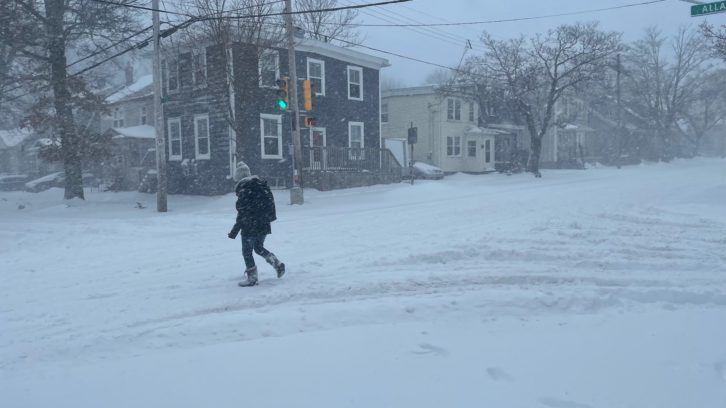
caption
A girl crosses an intersection through the snow the afternoon of the Jan. 29 snowstorm.The storm began in the early morning on Jan. 29. Many businesses closed in the city preemptively. Above, a girl crosses the street near the Osprey Roost butcher shop, one of the businesses closed down in the storm.
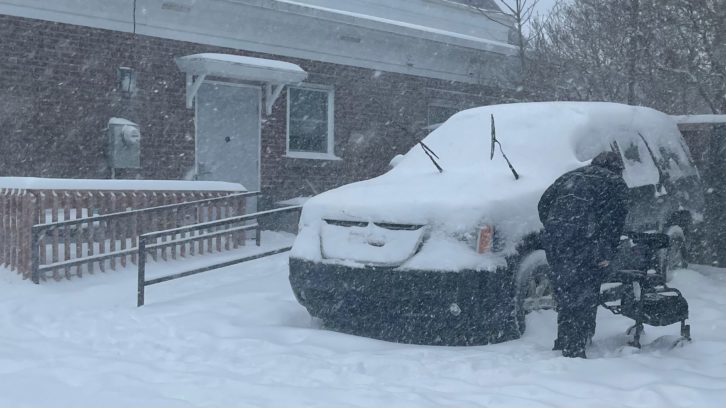
caption
A man walks to his car the morning of the Jan. 29 snowstorm.The storm buried vehicles and froze the streets, causing accessibility issues for many across the city.
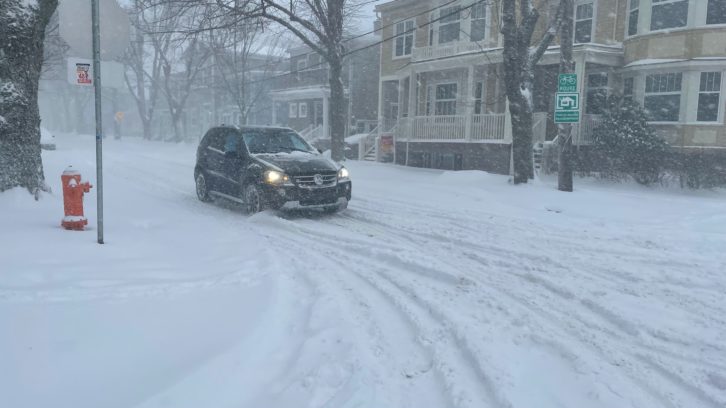
caption
A driver braves the conditions as the snow falls during the Jan. 29 storm.Some still braved the storm in cars and on foot, but the city was mostly quiet until the storm let up around 4 p.m. Then, the digging began.
On Sunday, the city woke up to a thick layer of ice all along the streets and sidewalks.
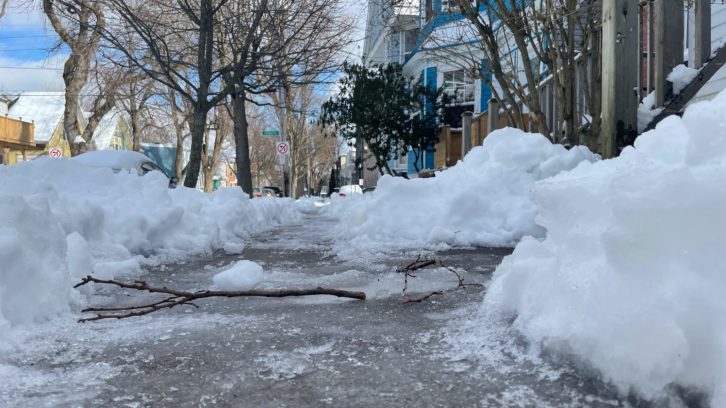
caption
A thick layer of ice coats the streets of Halifax after another wild winter storm ripped through the province.People dug out their vehicles and chipped away the ice on their properties.
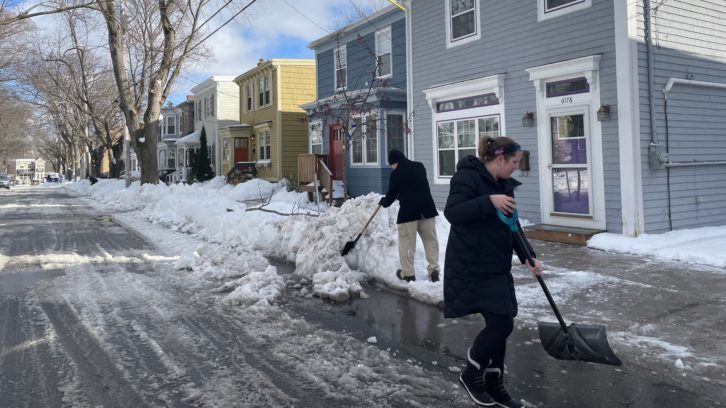
caption
People dig away snow and chip away ice in the aftermath of the weekend’s snowstorm.
caption
A man chips away ice in the aftermath of the weekend’s snowstorm.On Monday, the city was still trying to clear up the icy streets and sidewalks.

caption
Snowplows have been out on the roads and sidewalks for two days as the city tries to clean up Saturday’s storm.It was the last blast of a month of wild winter weather, and the third weekend storm in four weeks. January was also notable for its wild temperature swings.
Those temperature swings can be attributed to climate change, says a Dalhousie professor.
Phillip Bennett, a professor of physics and atmospheric science, was responding to questions about days like Jan. 12, which saw a 21-degree change, from -20C at 8 a.m. that day, according to the weather trivia site weatherspark.com, to 1 C by 11 p.m. that night and to 2 C the next day.
He describes weather as being “the process by which energy is transported.”
He said the temperatures we experience are more extreme now because there is more transfer of energy in the atmosphere.
Conditions on Jan. 11 yielded no warning to the drastic difference in temperature that would come the next day.
It was a cold day with a high of minus 11 and a low of minus 18. The forecast was for light snow and mist with mixed precipitation but mostly overcast day due to cloud cover.
In the first two weeks of January 2021, snowfall was recorded almost every day. This year, though, a mix of rain and snow was recorded most days of the first two weeks of the year.
The biggest fluctuation in temperature for the first two weeks of 2021 was recorded on Jan. 11, which had a high of 2C and a low of -8C, for an 11-degree difference.
Climate change has a direct effect on the earth’s weather and weather patterns, said Bennett.
He says these changes are not unusual, saying that “over time, that kind of behaviour is what you would expect.
“As you put more greenhouse gases into the atmosphere, you’re going to expect a stronger transfer of energy from the Poles to the equator to the poles, and that will give you more of these steep weather events.”
Bennett thinks the weather will probably continue to be more on the extreme side.
About the author
Adam Inniss
Adam Inniss is a Halifax-based writer from Guelph Ontario. He works as the News Editor for the Dalhousie Gazette and occasionally writes reviews...

